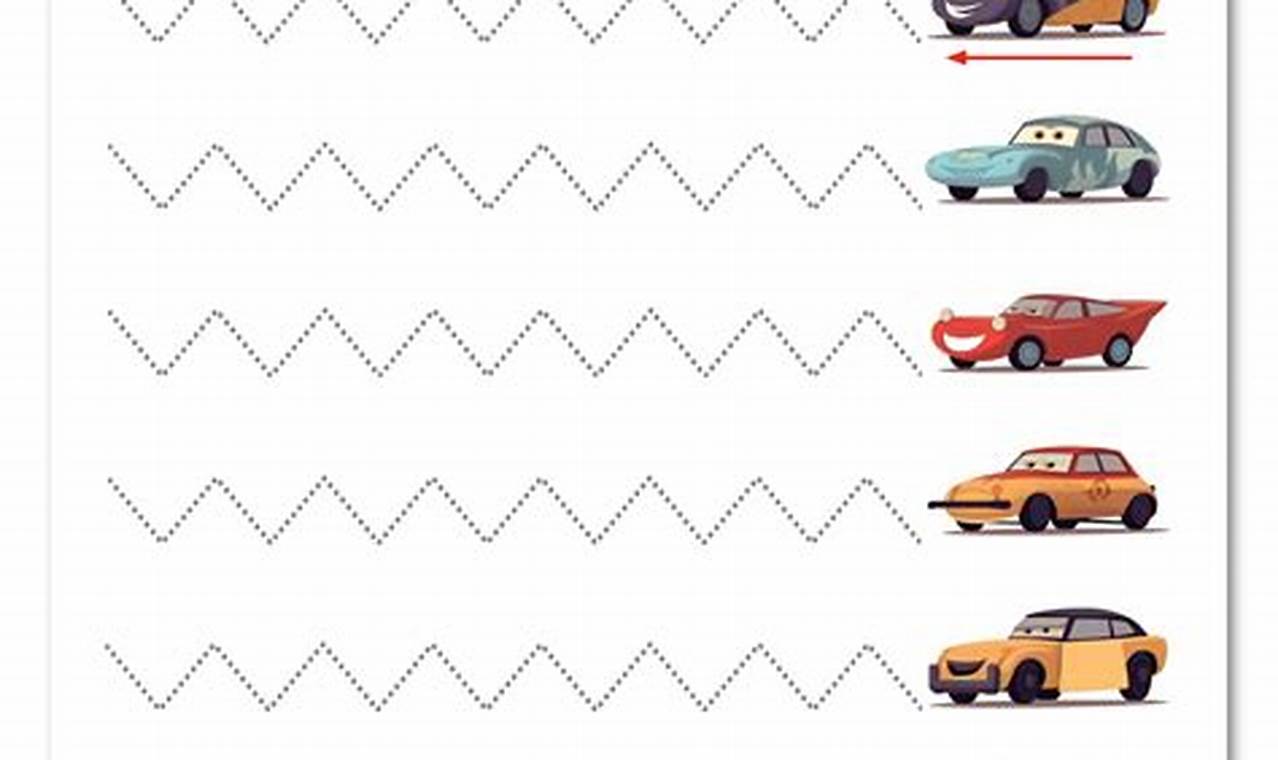Developing fine motor skills is a crucial step in a young child’s educational journey. Activities that encourage precise hand movements lay the foundation for handwriting, drawing, and various other essential skills. The “Zig Zag Lines for Pencil Control Worksheets for Young Children” provides a structured and engaging way to help children master this fundamental ability.
The primary benefit of using the “Zig Zag Lines for Pencil Control” worksheet is the development of improved hand-eye coordination. Consistent practice with the worksheet enhances pencil grip, hand stability, and the ability to follow visual patterns. This, in turn, boosts a child’s confidence and prepares them for more complex writing tasks. Furthermore, tracing zig zag lines helps children understand and replicate different angles and directional changes, a skill vital for forming letters and numbers accurately.
The “Zig Zag Lines for Pencil Control” worksheet features a series of zig zag patterns of varying sizes and complexities. Bold lines are used to clearly define the tracing path, making it easier for young children to follow. The worksheet provides ample space for repetitive practice, allowing children to gradually refine their motor skills. Some variations may also include dotted lines or lighter zig zag patterns for added challenge and skill progression. Fun, age-appropriate illustrations can also be incorporated to maintain children’s interest and engagement.
To use the “Zig Zag Lines for Pencil Control” worksheet effectively, provide the child with a comfortable and supportive learning environment. A thick pencil or crayon can be easier for small hands to grip. Begin by guiding the child’s hand along the first few zig zag lines, demonstrating the correct technique. Encourage the child to trace slowly and carefully, focusing on staying within the lines. Break the activity into short, manageable sessions to prevent frustration. Positive reinforcement, such as praise and encouragement, will help the child stay motivated and engaged.
To further support a child’s development of fine motor skills, consider incorporating other related activities. Additional tracing worksheets featuring different line patterns (straight, curved, wavy) available on Kidtraces.com can provide varied practice. Activities such as playing with building blocks, using playdough, or stringing beads are also beneficial. Reading aloud and encouraging drawing or coloring on a daily basis will also help to reinforce these essential skills.
The “Zig Zag Lines for Pencil Control” worksheet offers a valuable tool for enhancing fine motor skills in young children. By providing structured practice and encouraging careful attention to detail, this worksheet can help children develop the hand-eye coordination and pencil control necessary for future academic success. Download the worksheet today from Kidtraces.com and explore the many other free resources available to support continuous learning and skill development.
